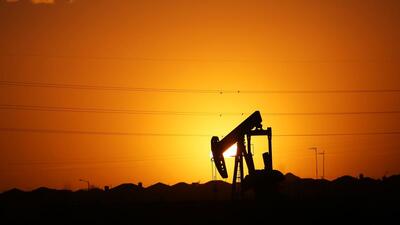Perfect storm: coronavirus and an oil price war lead US towards recession

The U.S. economy is poised for a recession similar to the 2008 sub-prime mortgage crisis - albeit on a far smaller scale - due to the combined effect of the coronavirus outbreak and an ugly oil price war between Saudi Arabia and Russia, according to oil industry experts.
Falling global demand for energy due to a business slowdown caused by the coronavirus, coincided over the weekend with a race to raise production by both Saudi Arabia and Russia in a battle for market share between the two oil giants.
This ‘perfect storm’ of supply-and-demand economics is likely to causes thousands of job losses in the vulnerable U.S. oil and gas sector, the experts say, due to the crushing debt held by many fracking and oil shale companies that borrowed from banks over the last decade in a furious
U.S. quest by the world’s biggest consumer to become self-sufficient in oil.
As oil prices fall, many companies won’t be able to refinance their debts and will be forced into bankruptcy, laying off thousands of jobs.
Energy is the world’s largest industry and there are numerous public companies whose value is based on the price of crude oil. Add to that, the increasing impact of coronavirus on the larger economy as millions of Americans stop vacationing or commuting, and decide to work from home, further reducing the demand for gasoline.
In the United States, oil and gas accounts for 13-17% of the economy, though that is in fact down from 30% two decades ago due to the U.S. high tech boom.
Publicly traded oil and gas companies employ an estimated 700,000 people, according to industry sources, not including the millions more who benefit indirectly, such as heavy machinery companies, pickup dealerships, diners and motels.
Debt
The U.S. oil and gas industry are carrying about $200 billion debt, including exploration, pipelines and oil field services, according to Alex Adams with Securing America’s Future Energy (SAFE), a Washington DC-based group of military and business leaders seeking to cut dependence on oil. “The companies operating in the shale patch are heavily leveraged and the tab for most of that debt is due over the next four years,” said Adams.
Much like the self-quarantining now being mandated by health officials to tackle the coronavirus, the oil and gas industry is looking at shutting down all new drilling activity and reducing output in a desperate effort to push prices back up and cut losses.
To be sure, the current unfolding crisis is not on the same scale as the ‘great recession’ of 2008, when owners of stocks in U.S. corporations suffered about $8 trillion in losses.
But, with oil now trading in the $30 dollar range, down from $50 a few days ago, that’s very bad news for cities like Midland and Odessa, Texas, the heart of the Permian Basin, nation’s largest shale oil field. “Much of the local economy is based on this new-found oil wealth. It’s a source of revenue for local governments in Texas and North Dakota,” said Adams.
In the last mini price collapse in 2016, when oil prices fell from $100 a barrel to $26, about 150 U.S. oil companies went bankrupt with the loss of 150-200,000 jobs, Adams pointed out.
"30 is not ideal"
While it is still too early to measure the hurt from the current crisis, as many as 500 companies could enter bankruptcy in the next six months, aid said Dan Dicker, a former oil and gas trader in New York and author of the book ‘Shale Boom, Shale Bust: The Myth of Saudi America.’ “In good times or moderately decent times, oil demand has always gone up. To see this kind of contraction in demand is a pretty decent sign you’re heading towards a recession,” he told Univision.
“$30 dollars is not ideal,” said Karen Harbert, President of the American Gas Association, speaking on Fox. “It’s hard to imagine making money at $30 a barrel, or below that,” she added.
Some are trying to look on the bright side. As gas prices tumbled on Monday, President Trump tweeted: “Good for the consumer, gasoline prices coming down!”
Systemic risk
While there is a benefit to consumer savings on gasoline, it’s unlikely to make up for the damage of mass layoffs in the oil and gas industry. “Although it’s much smaller than the 2008 crisis, the oil and gas debt does pose a systemic risk in the financial sector,” said Dicker.
Falling U.S. oil shale production also means increasing imports of cheaper foreign oil, which will upset the U.S. balance or trade. Furthermore, lower oil prices are bad for other sectors such as the renewable energy industry which will have a tougher time competing with cheap fossil fuels.
The good news is that the current crisis also differs from the 2008 meltdown in a key aspect, according to Bernadette Johnson, Vice President of Market Intelligence at Enverus.
“The subprime mortgage meltdown was a result of a failure of government policies and lack of understanding of the risks these mortgages presented by investors and lenders,” she said. “This time around the market drop is actually the market functioning as it’s supposed to by pricing commodities based on supply/demand dynamics,” she added.
On the other hand, some experts say the rush into shale oil and fracking ignored higher risks from unexpected geopolitical events due to the far higher costs and lower profit margins than conventional oil drilling.
Crude v fracking
Unlike easy-to-drill Saudi oil, fracking for shale oil involves a much more expensive process involving 90-degree underground horizontal drilling to extract deposits in tight seams, with added capital and labor costs. Shale oil costs can range from $40 to $60 a barrel, while Saudi Arabia can produce conventional oil at under $10 per barrel. Shale oil deposits are also tighter and have a comparatively short production life compared to a conventional well.
“There was a great appetite after the recession with low interest rates. These guys got leveraged up because with shale you have to keep drilling,” said Dicker. “The only way to pay off those bonds is by keeping up the cash flow. It becomes almost a Ponzi scheme. Now is moment when that all comes unstuck,” he added.
The importance of the fracking industry was highlighted in a recent report from the American Petroleum Institute which found that “more than 95% of U.S. natural gas and oil wells today are developed using hydraulic fracturing.”
An end to fracking and federal oil and gas leasing, or a ban as Democratic presidential candidate Bernie Sanders has proposed, could trigger a U.S. recession, leading to a $1.2 trillion reduction in GDP and 7.5 million lost jobs by 2022, the API said.
Average gasoline prices would be 15% higher, while electricity prices average 20% more per family, per year. Farmers would also suffer $25 billion in losses due to increased energy costs.
Boom and bust history
However, over its history, the oil industry has proven itself to be resilient, experts say. “The history of oil and gas is boom and bust. We don’t have to look too far in the past to find similar examples to what we are seeing now,” said Adams.
Over the last two decades oil has see-sawed between $20 a barrel in the 1990s to $140 a barrel in 2010, with gas prices at the pump going from $1 a gallon as high as $4 a gallon.
“U.S. shale is a very versatile industry with a tremendous capacity for innovation. It’s very lean and efficient, even if things look very bearish right
now,” he said.


